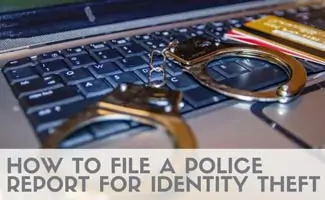What Is Wire Fraud? Types Of Wire Fraud, Examples, Prevention & More
When you purchase through links on our site, we may earn a commission. Here’s how it works.

This guest post was written by Darrin Giglio, Chief Investigator and CEO at North American Investigations. He has 25+ years of experience and is a leading private investigation expert. Learn from Giglio’s advice on how to prevent being a victim of wire fraud, types of wire fraud and how it happens.
I’ve been hired as an investigator to dig into cases involving wire fraud. The term “wire fraud” might conjure up images of Theranos founder Elizabeth Holmes being indicted by the federal government or lawyer Michael Avenatti receiving a ‘superseding’ indictment from a federal grand jury in the SDNY Nike extortion case. But day-to-day, garden-variety wire fraud affects the greater public to a much larger extent.
How Much Is Wire Fraud Happening In The U.S.?
Internet scams affect an average of 350,000 people each year. According to the FBI’s IC3 2021 Internet Crime Report, trending scams such as business email compromise (BEC), ransomware, elder fraud, and tech support fraud have amounted to losses exceeding $6.59 billion for 2021 (an increase of 7% from 2020).
What Are The Most Common Forms Of Cybercrime?
The four most prevalent crime types reported were:
- Phishing/Vishing/Smishing/Pharming
- Non-Payment/Non-Delivery
- Extortion
- Personal Data Breach
The 4 Legal Elements Of Wire Fraud
The United States Department of Justice breaks down wire fraud into four elements. Under Section 1343 they directly parallel those of the mail fraud statute but require the use of an interstate telephone call or electronic communication made in furtherance of the scheme.
- The defendant voluntarily and intentionally devised or participated in a scheme to defraud another out of money
- The defendant did so with the intent to defraud
- It was reasonably foreseeable that interstate wire communications would be used
- Interstate wire communications were in fact used
How Does Wire Fraud Happen?
The four main ways that wire fraudsters gain access to your personal information include:
Phishing
Phishing takes the form of an email sent to your inbox that looks like it’s from an instantly recognizable company (such as a financial institution, a credit card provider or an online payment platform like Paypal). The email may direct you to:
- Confirm personal information (social security number, password)
- Pay a fake invoice
- Click on a link or guide you to open an attachment

Vishing or Voice Phishing
Voice phishing is a form of fraud where the perpetrator uses social engineering via the phone to gain personal or financial information from the victim. This form of fraud is particularly prevalent as it can be automated across thousands of phone numbers using voice recordings from a “trustworthy” or authoritative-sounding voice.
Smishing Or SMS Phishing
The recipient of a smishing scam receives a fraudulent text trying to trick you into providing private information to the scammer. This is the fastest-growing form of wire fraud now that 77% of Americans are using smartphones.
Pharming
Pharming (pharming + fishing) takes the form of a cyberattack that redirects the traffic from one site to a different fake site. The end goal is to trick you into entering your login credentials, which the criminal will capture and then assume your identity to log into the real site — and steal yet more information.
Learn How To Stop Phone Scams & Spoofing Calls
5 Types Of Wire Fraud
Now that you understand how it happens, there are five types of wire fraud to be aware of.
1. Advance-Fee Scam
The ‘Nigerian Prince scam,’ officially known as an advance-fee scam, is one of the most common and oldest forms of wire fraud. The victim is promised a large sum of money in return for a small upfront payment. The criminal typically contacts the victim from a fake social media profile or email address with an offer that’s too good to turn down. The scam often involves stories of unclaimed money or inherited wealth.
2. Lottery Fraud
A lottery scam is a form of an advance-fee scam. The victim receives an email announcing that they’ve won a large sum in a lottery, and the scammer will often use the name of a legitimate lottery organization. In order to claim their winnings, victims are asked to contact a “claims agent.” This fake agent will instruct them to wire a processing fee in order to collect the sum. Naturally, the victim never sees the money.
3. Elder Fraud
In 2019, the IC3 (Internet Crime Complaint Center) branch of the FBI received over 68,000 complaints from victims over the age of 60 with losses exceeding $835 million. The elderly are believed to have significant financial resources and often fall prey to scams. The sad part about this is that once they’ve been successfully defrauded once, they often become repeat victims.
4. Mortgage Fraud
This lesser-known form of fraud involves the criminal gaining control of the title holder’s email account during the urgent time window of the close-of-the-house sale. In typical bait-and-switch fashion, the scammer will announce a last-minute change of wiring instructions and have the funds wired to the perpetrator’s account.
 5. Identity Theft
5. Identity Theft
Once an individual has gained access to your private information or email account(s), they can wreak a lot of havoc in a short period of time. They can open additional accounts in your name, access your bank accounts and credit cards or assume your identity and contact your friends and relatives.
Learn More About Identity Theft
Wire-Fraud Thieves Can Be A Global Syndicate
See one of many cases where the U.S. FBI worked with many international agencies to break up a well-coordinated global wire-fraud scheme.
5 Ways To Prevent Wire Fraud
Here are a few easy steps you can take to make sure that you are protected.
1) Limit Your Public Information
The first place to lock down your public information is your social media accounts, namely Facebook.
- In the upper right-hand corner of your Facebook homepage go to Settings > Security and Login.
- Scroll down to ‘Two-Factor Authentication’ and ‘Setting Up Extra Security’
- Set up two-factor authentication by using an app like Google Authenticator or Duo Mobile to generate verification codes for more protection. This way, Facebook will ask for a code if they notice an attempted login from an unrecognized device or browser.
- Click on ‘Authorized Logins’ to review the list of devices where you won’t have to use a login code.
- App Passwords — use special passwords to log in to apps instead of your FB password.
- Use the ‘Get alerts about unrecognized logins’ function, which lets you know if anyone logs in from a device or browser you don’t normally use.
Do the same for your Google Accounts or any other social or email profiles that you have.
Tip: Run Google checks on your name, email addresses, and phone number(s) to see which information is publicly available online — and which info you can have removed.
2) Secure Your Accounts With Strong Passwords And Two-Factor Authentication

Using two-factor authentication adds a crucial layer of protection because it only grants login access after the user has presented two pieces of evidence or verification. And only use strong passwords with a minimum of 12 characters, utilizing upper and lower case letters, numbers and symbols. You could use a platform like Roboform or LastPass to both generate and manage stronger and unique passwords.
3) Customize Email Spam Filter Settings
Sign in to your Google Admin Console and then customize your spam filter from the advanced settings. This will allow you to:
- Get very strict with the filtering of bulk email
- Bypass mail sent from within your domain
- Enable “approved-only” email sender lists
- Place any received spam into administrative quarantine
Once you put a strict system in place for your email, you may not even notice the phishing scams being sent your way because your email provider is handling everything behind the scenes. And if you become too good at this, you may end up doing this for all of your relatives.
4) Use System Monitoring Software
The next step up in computer security is system monitoring software. A security monitoring solution is continuous and automated. Sometimes known as a web security gateway, you’re using spyware, virus protection, content filtering, and encrypted traffic scanning. This ranges from $30/year anti-virus/anti-malware software all the way to enterprise security solutions.
5) Conduct Proper Identity And Background Checks
Gather all of the contact info on the person you’re doing business with right at the beginning. This includes full names, cell phone numbers, email addresses, street address and any other points of contact.
Learn More To Protect Yourself From Cybercrime
Wire fraud is a major part of internet scams, but we also have some other excellent tips on how you can protect yourself from all kinds of cybercrimes when you’re at home or on the road. So be sure to check out our guide on protecting yourself from cybercrime.



